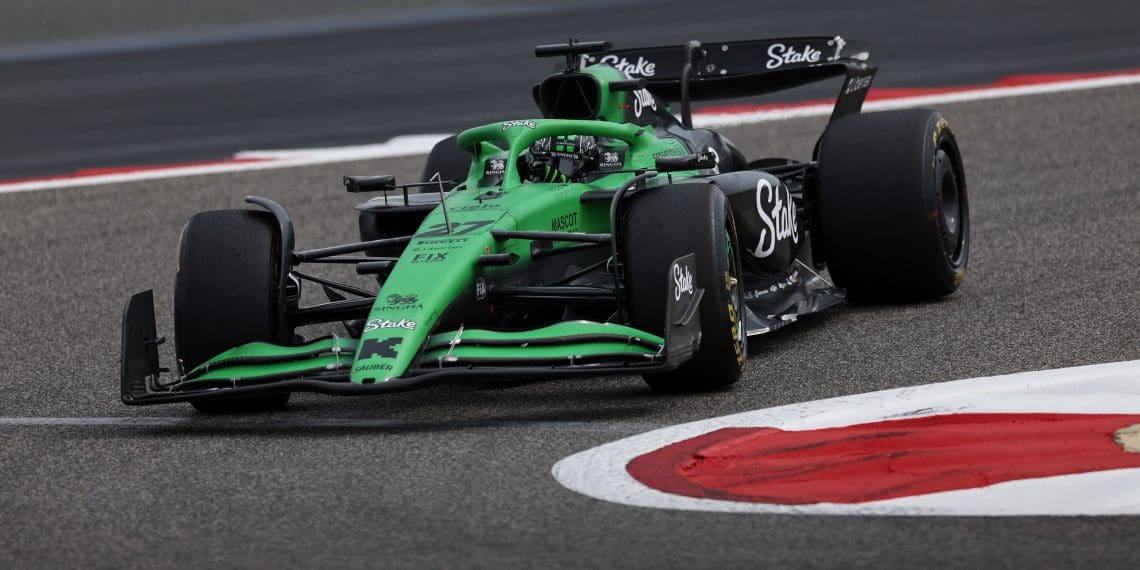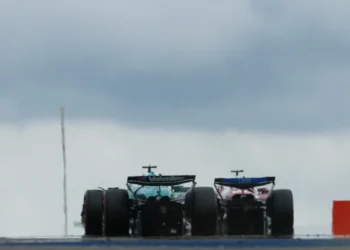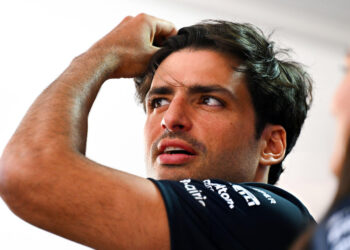In the thrilling world of Formula 1, 2025’s pre-season testing has uncovered some fascinating insights into the performance and potential of each F1 car. The first day of testing was shrouded in an air of mystery, with questions about fuel loads, run plans, and engine modes. Despite this, the on-track visuals of the cars were revealing, providing a sneak peek into the unique traits of each vehicle.
The pre-season testing period, characterized by tire barrier observations, is an intriguing phase. It offers an ever-growing understanding of the performance of each car, with every trackside pass contributing to the overall picture. The first day saw all 20 drivers on the track, offering a brief overview of the key contenders for the upcoming season.
McLaren’s vehicle was largely inconspicuous during the first half of the day, with Oscar Piastri’s run plan not revealing any fundamental issues with the car. However, in the afternoon, the speed was ramped up, with Lando Norris hinting that the car could live up to its pre-season favorite status. The McLaren exhibited good consistency, corner rotation, and traction. Based on the first day’s performance, the McLaren stands out – but only by a small margin.
Ferrari’s vehicle, piloted by Lewis Hamilton, presented an initial impression of responsive turn-in, a trait favored by both Hamilton and Charles Leclerc. However, the line between responsive and over-responsive soon became blurred, and Hamilton experienced a few minor hiccups. Despite this, the Ferrari appears promising, although it seems to be trying a bit too hard at times, suggesting that the sweet spot is yet to be discovered.
The Red Bull RB21 showed promise in the morning, with Liam Lawson appearing confident. However, as he pushed the car further, it started displaying a slightly trickier nature, with a spin at Turn 3 serving as a reminder of the car’s potential for unpredictability. The car’s performance raises questions about whether the balance limitations of the previous year’s model have truly been addressed, despite its fast and exciting appearance.
Mercedes’ W16 seems to instill genuine confidence in its drivers, Kimi Antonelli and George Russell. Russell’s performance was particularly impressive, demonstrating consistency and responsiveness. However, whether the car has the pace to match its handling remains to be seen.
Aston Martin’s 2025 car appears to have achieved its aim of being more stable and benign than its predecessor. While it looked conservative in the morning, the afternoon session showed it to be confidence-inspiring, raising questions about its overall speed.
Alpine’s car shows a marked improvement over its 2024 predecessor. Although there are hints of imbalance, the car generally appears firm. The rear instability under braking is a concern, but it doesn’t persist. Pierre Gasly’s confidence in the car is a positive sign, suggesting that it could be a front-runner in the midfield.
Haas’ car, focused on high-fuel running, didn’t appear particularly lively. Despite some mid-corner understeer and difficulty in the high-speed Esses, the car’s consistency is promising.
Racing Bulls’ car didn’t stand out either positively or negatively, appearing well-balanced but with some front-end limitation in slower corners.
The Williams car, driven by Alex Albon and Carlos Sainz, was intriguing to observe, reacting more to bumps and showing some rear instability under braking. However, at times it appeared to be the most impressive among the midfield pack.
The Sauber C45, driven by Nico Hulkenberg, initially struggled with traction and front-end grip. However, after some adjustments, it became more stable, suggesting that some of the mechanical issues from the previous year have been addressed.
As the pre-season testing unfolds, each day brings new insights into the performance and potential of the 2025 Formula 1 cars. The excitement continues to build as we inch closer to the upcoming season.













